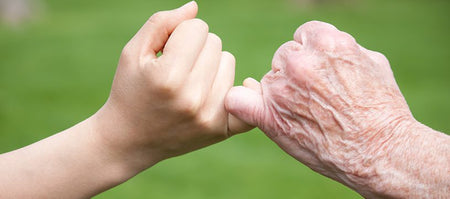Latest Posts

In Your Corner, Student Learning
Pandemic Learning: Loss, Lagging, or Latent
A disheartening number of media reports, political assessments, and even some educational leaders use the label “learning loss” to describe the impact of conditions present during the pandemic. Taken at face value, learning loss implies that widespread student learning has regressed. Yet, we know that the vast majority of students have continued to make progress over the past year. Of course, the progress has not always been what is expected in light of the pace of learning these students have demonstrated in the past or compared to what is envisioned in standard face-to-face curriculum.
The fact is that learning loss is generally confined to a relatively small number of students who failed to be present in school, remote or in-person, over the past year. They received little if any instruction and were able to realize little to no new learning. Long periods of absence from learning environments have likely left these students with some level of learning loss because the learning they gained previously was not used or reinforced.
These are tragic circumstances. We need to do everything within our power to locate and reengage these students. However, it is a mistake to describe the state of learning or plan recovery strategies for most students based on the situation in which a minority of students find themselves.
In reality, many students have struggled with remote, hybrid, and in-person learning as a result of disruptions and distractions that competed for their attention during the pandemic. However, they have continued to make progress. There are elements and aspects of their learning that have not developed as quickly or completely as expected. These students need support to fill in areas where their learning has been lagging in the past months. They do not need to be retaught much of what they knew prior to the pandemic. They also do not need to spend significant time and energy on concepts and skills they were able to learn despite the situational challenges they faced. These students are more likely to need targeted intervention to bring them back to a place and pace where they can find success going forward.
Still another group of students has been able to keep their learning on pace, or maybe even accelerated, despite the disruptions and uncertainty surrounding their learning environment. Remarkably, many of these students experienced learning beyond the curriculum and explicit instruction. They may well have gained latent learning that has gone unnoticed and unrecognized. They have gained skills that can propel them forward. They have developed interests and areas of expertise that can be nurtured to even higher levels. These students also warrant attention and support to continue to move their learning forward and expand their learning horizons in the coming months.
Students in all three groups deserve attention and recognition of their learning needs and progress. However, they do not need the same support. In fact, within each of the loss, lagging, and latent learning groups, students will need attention that responds to their specific needs and is tailored to their readiness to learn.
We may not be able to extinguish popular, yet inaccurate, use of the term “learning loss” to describe the impact of the pandemic on students over the past year. Yet, we can be more accurate and specific in our language and in the strategies we develop and employ in the coming months to support the learning of all of our students.

In Your Corner, Leadership and Change Management
Drive Teacher Success With Five Types of Collaboration
The term “collaboration” is tossed about freely in education conversations. Just about everyone agrees that it is a good thing to participate in. We may even see it as a useful tool for staff to use as they share strategies, make plans, and solve problems, especially now as teachers face new instructional contexts and learning challenges. All of these applications can be useful, but to take full advantage of what a collaborative focus can offer to support instructional success requires that we understand and employ collaborative strategies at a deeper level than is common in casual use.
In fact, there are at least five forms of collaboration available to tap. Each application can serve a need and professional purpose. However, tapping collaboration’s real power requires a match between the strategy and the context and goal. We might think of it as having levels, each offering benefits and serving specific purposes.
Level one: Sharing frustrations and emotional release. Collaboration at this level involves sharing frustrations, recounting experiences, expressing opinions, and describing perceptions. These experiences can offer a sense of belonging, mutual support, and emotional release: important experiences during times of stress and uncertainty. Such experiences can be useful to building community and culture, as long as the dominate tone is positive and supportive. However, this form of collaboration typically does not result in significant professional learning or improvements in professional practice. In short, sharing frustrations and emotional release can be useful in measured doses, but overindulgence diminishes most benefits.
Level two: Growing camaraderie and sharing “war stories.” The next level involves the sharing of insights, knowledge gleaned from past experiences, and folklore of the profession. The focus of this type of collaboration is not on solving specific problems as much as sharing traditional wisdom and beliefs about how things work generally. The sharing aspect of this type of collaboration can build common values and ways of thinking, especially for inexperienced participants. Carefully selected mentors and thoughtful coaches can employ this type of collaboration to onboard new professionals. It can also be a grounding experience for veteran practitioners.
Level three: Sharing solutions. At this level, the focus is on identifying and understanding challenges and sharing solutions that team or group members have tried. This form of collaboration is often what people assume when they hear the term. The goal is to share experiences and learning with others in support of each other’s success. However, since the insights and solutions shared are typically based in the experiences and contexts of those who share them, learning must often be translated, evaluated, and applied in a different context. Thus, the learning value can be limited. This type of collaboration works best with specific problems that are likely to be solved using shared actions and common strategies.
Level four: Solving problems together. This higher level of collaboration invites participants to gain a common understanding of the challenge or problem and then work together to find solutions. Collaborators share their best thinking, unique insights, and expertise with the goal of finding the best solution or set of solutions for all. In its best form, every participant learns and all benefit from outcomes in ways that they likely would not have experienced alone. This approach works best with more complex problems that require flexibility and deeper understanding.
Level five: Co-invention. This highest level invites collaborators to go beyond solving a problem to inventing solutions, approaches, frameworks, and strategies that improve professional practices and offer benefits beyond the specific work and needs of participants. This level of engagement is fairly rare in education, but it offers exceptional professional satisfaction and opportunities to make significant contributions to the field. We can support our most talented and creative staff to grow and contribute through this powerful form of collaboration.
As we consider the unprecedented needs and challenges staff members face, it makes sense to support and position staff to engage in the type and level of collaboration that best matches their needs and context. When we do, we open doors to new relationships, novel insights, a healthy culture, and new ideas and solutions.
Adapted from:
Rickabaugh, J. (2016). Tapping the Power of Personalized Learning: A Roadmap for School Leaders (pp.120-122). ASCD.
Share Your Tips & Stories
Share your story and the tips you have for getting through this challenging time. It can remind a fellow school leader of something they forgot, or your example can make a difficult task much easier and allow them to get more done in less time. We may publish your comments.
Send Us An Email













